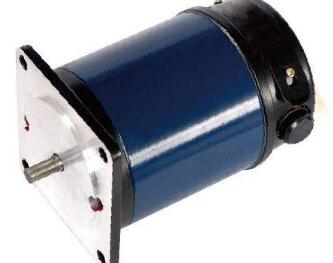
In the previous article, we have learned about the solutions to DC permanent magnet motors that get damp. It can be seen that this motor will get damp if it is not properly maintained in some humid environments. There are three solutions to this phenomenon, namely: excitation coil drying method, electric welding machine drying method, and external heat source heating method.
As for DC permanent magnet motors, they are actually widely used in our lives. I wonder if you know anything about its detection methods? But we can divide it into static detection, dynamic detection and basic detection according to different situations. Next, the editor will analyze it in detail!
1. Static detection
1. DC permanent magnet motors need to use a megger to measure their insulation resistance (between armature and excitation; between motor, excitation and shell).
2. Observe the commutator, it is smooth and has no scars.
3. Check the wear degree of the carbon brush and whether the "pigtail" is loose or damaged.
4. Check whether the internal connection with the output terminal is firm.
2. Dynamic detection
1. Determining the geometric center line and judging the voltage symmetry under the same given forward and reverse directions.
2. If the no-load current is greater than 10%, there is a problem. The normal no-load current should be less than 10% to be normal.
3. Run to the rated speed without load, stop freely when power is off, check the operation of the drive train bearings of the DC permanent magnet motor and determine whether the dynamic balance meets the requirements. During the taxiing process, the DC permanent magnet motor should not have obvious vibration and noise.
3. Basic detection methods
1. Observation method
We can visually inspect the ends of the windings and the insulation in the trunking to see if there are any signs of damage or charring. If there are any, it is the grounding point.
2. Light test method
If the test light is on, it means the winding is grounded. If sparks or smoke are found somewhere, it is the winding ground fault point. If the light is dimly lit, the insulation has a ground breakdown. If the light does not light up, but sparks appear when the test rod is grounded, it means that the winding has not broken down, but is only seriously affected by moisture. At this time, we can also use hard wood to tap lightly on the edge of the shell. When the tap hits a certain place and it turns off and on, it means that the current is on and off, and that place is the grounding point.
3. Current penetration burning method
We can use a voltage-regulating transformer. After it is connected to the power supply, the ground point will heat up quickly. The place where the insulation smokes is the ground point. In addition, we should pay special attention to that small DC permanent magnet motors should not exceed twice the rated current for no more than half a minute; for large motors, the rated current should be 20%-50% or gradually increase the current, and stop when the ground point just starts to smoke. electricity.
4. Group elimination method
For cases where the grounding point is inside the iron core and the burning is severe, the burned copper wire and the iron core are fused together. For this phenomenon, the method generally used is to divide the grounded one-phase winding into two halves, and so on, to find the grounding point.



















